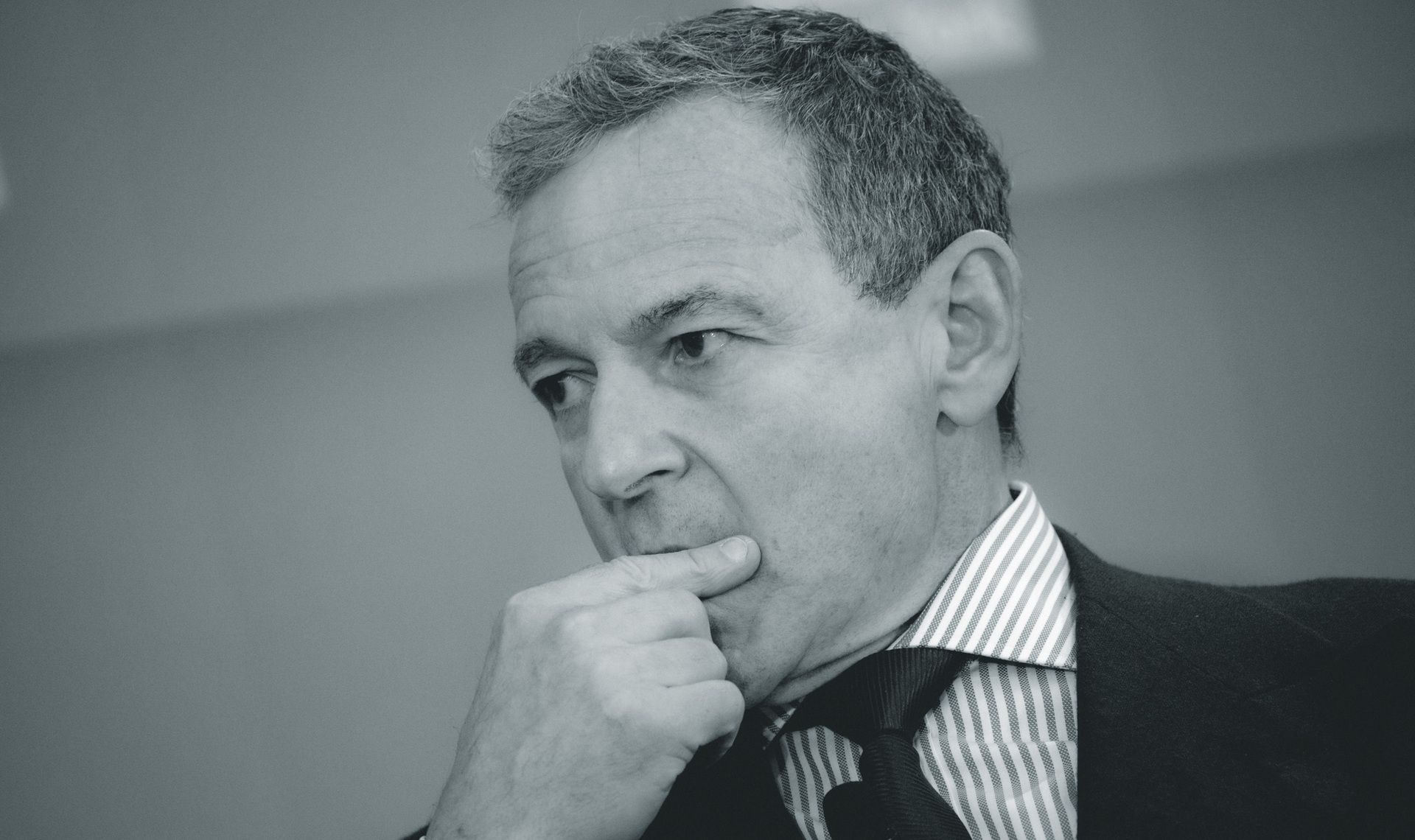
Disney chief Bob Iger. (Photo by Drew Angerer/Getty Images)
On Tuesday morning, Donald Trump was seated beside Saudi Crown Prince Mohammed bin Salman in the Oval Office when a journalist asked the royal a pointed question: “Why should Americans trust you after orchestrating the brutal murder of Jamal Khashoggi?”
Before MBS could respond, Trump stepped in to snap at the reporter.
“Who are you with?” he demanded of Mary Bruce, ABC News’ chief White House correspondent. “Fake news. ABC is fake news, one of the worst in the business.”
What followed was a public dressing-down designed as much for the cameras as for the Saudi prince sitting beside him. Trump tore into Bruce, calling her a “terrible person and a terrible reporter” and accusing her of being “all psyched up”—a demeaning display leveled at a journalist simply doing her job, and one delivered in front of an autocratic leader whose own regime has imprisoned and killed members of the press.
As if eager to impress the crown prince, Trump then floated that ABC, owned by Disney, should lose its broadcast license entirely over Bruce’s questioning. “I think the license should be taken away from ABC because your news is so fake and it’s so wrong,” he said. “And we have a great commissioner, the chairman, who should look at that,” he added in reference to FCC chief Brendan Carr. (Regular reminder: The FCC can’t “take away” ABC’s license; local stations are licensed, not national networks.)
The next day, the White House published a bizarre article declaring ABC “fake news” and denouncing it as “a Democrat spin operation masquerading as a broadcast network.” Then just after midnight Thursday, Trump ripped into Jimmy Kimmel, ABC’s biggest star, after the comedian opened his show with a monologue skewering the president over the Epstein Files.
“Why does ABC Fake News keep Jimmy Kimmel, a man with NO TALENT and VERY POOR TELEVISION RATINGS, on the air? Why do the TV Syndicates put up with it?” he wrote. “Also, totally biased coverage. Get the bum off the air!!!”
Kimmel pushed back the following night, needling Trump as a “snowflake” and daring him, “I’ll go when you go.” But after the sustained attacks on ABC’s News division, its reporters, and its late night star, Disney was notably silent on the matter, raising questions about its decision to allow Trump's assault to go unchallenged.
But inside Disney, executives have decided not to go tit-for-tat with the Trump administration’s attacks, according to a person familiar with the matter, a strategy aimed at bringing down the temperature in hopes of avoiding an open war of words that threatens to drag the entertainment giant deeper into the MAGA culture wars.
The non-reaction is a reversal for the Bob Iger-led Disney, which was once eager to position itself as a defender of its talent and values. Iger once relished publicly pushing back against political intimidation. When Florida lawmakers attempted to punish Disney over speech issues years ago, Iger criticized the effort as blatant retaliation. He frequently spoke about the importance of independent journalism and corporate responsibility. Even those who rolled their eyes at Iger’s polished statesman routine acknowledged one thing: he worked hard to cultivate the image of a leader who didn’t fold under political pressure.
But in Trump’s erratic second term, news organizations are again confronting the question of how aggressively to push back against a president who gleefully attacks the press and turns those clashes into political fuel. Last week, Trump pointedly called Bloomberg News reporter, Catherine Lucey, a “piggy” while she attempted to ask a question aboard Air Force One. Days later, Bloomberg issued a carefully crafted statement aimed at defending her work while avoiding confrontation with Trump.
"Our White House journalists perform a vital public service, asking questions without fear or favor. We remain focused on reporting issues of public interest fairly and accurately,” it said.
Disney has said even less. The hushed response comes after Burbank previously settled a lawsuit with Trump for $16 million, and was widely criticized for suspending Kimmel following threats from Carr—a move widely seen as an act of capitulation. Now, Disney executives believe that staying quiet and declining to engage is a way to deprive the Trump administration of the anti-media oxygen it craves.
It’s a calculation familiar across news organizations, which are weighing the need for continued access against the risks of engaging a president who treats them as convenient targets. This year alone, Trump has filed lawsuits against The New York Times, The Wall Street Journal, attempted to revive a suit against CNN, and iced out The Associated Press over its refusal to adopt his “Gulf of America” naming demand.
Disney’s approach comes with obvious risks. Its silence could be seen as surrender at a moment when the president is openly working to delegitimize the press. And leaving Trump’s broadsides uncontested risks normalizing attacks on an independent media, emboldening the very behavior that has already warped the political conversation. But executives are wagering that feeding the outrage cycle only strengthens Trump and that denying him the clash he’s hunting for is the smarter play.
It’s a precarious gamble. For now, the House of Mouse is choosing to ignore the bully at the door, hoping that restraint keeps him from kicking it down.

